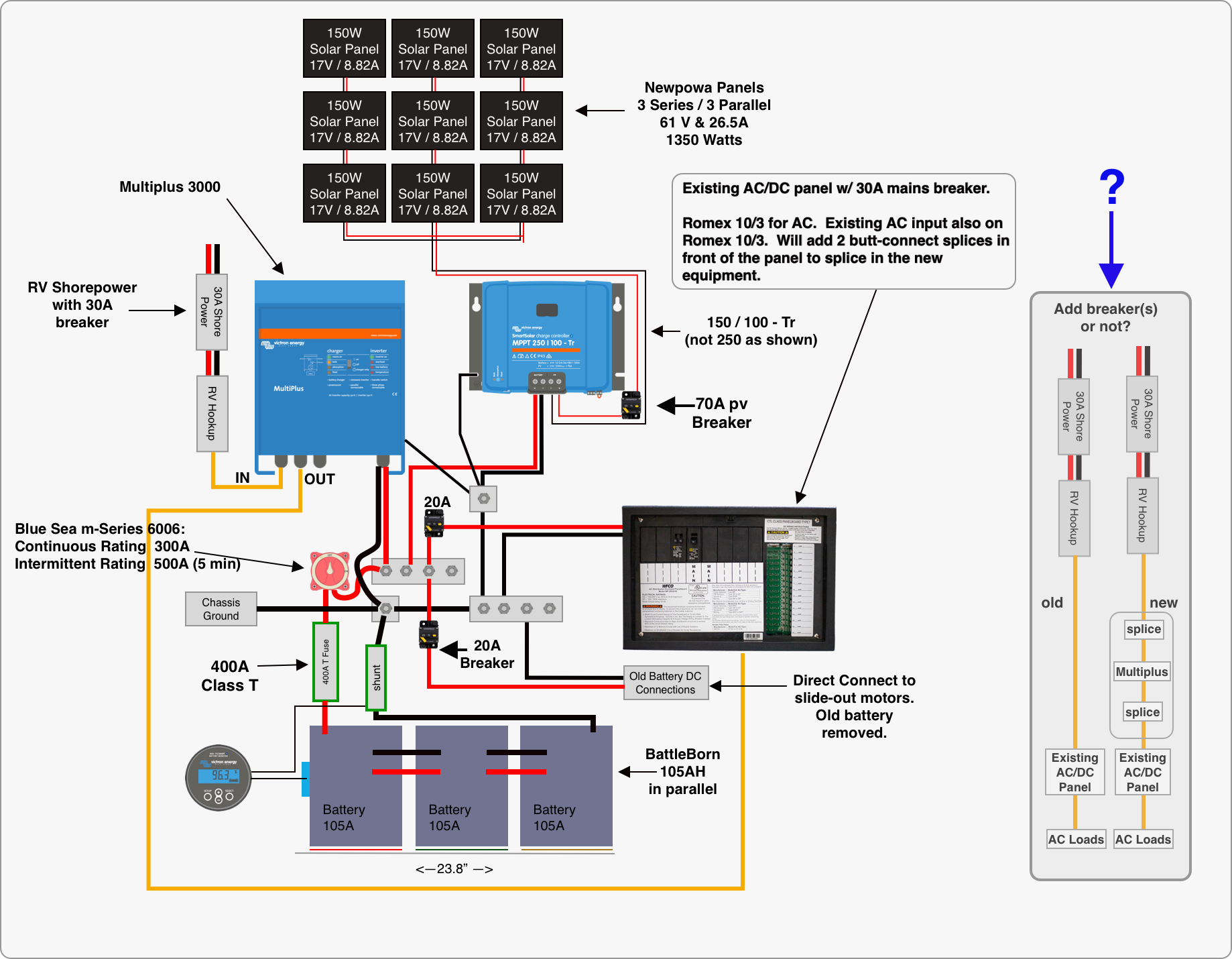I'm putting together plans to add solar to my RV and I think I have figured out what I need, but have one open question. I'll be splicing-in the the new power system to the existing AC input line.
Question is: do I need a 30A circuit breaker added to my schematic? The shore power will come out of a 30A breaker, and there's a 30A main breaker on the existing AC/DC distribution panel.
So is it necessary to add yet another breaker where I'm splicing-in the Multiplus?

